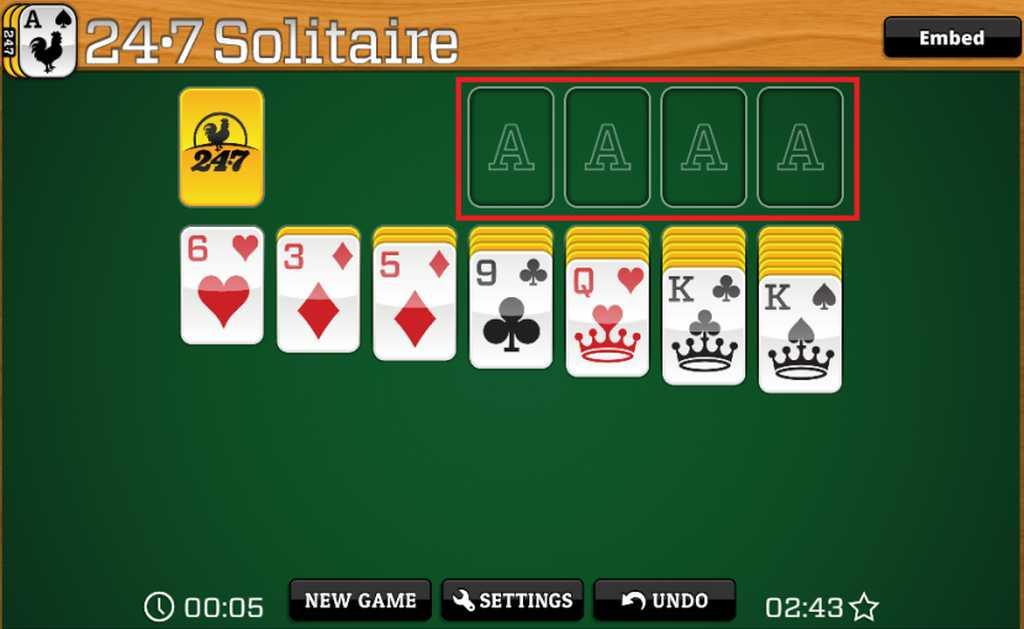how often is solitaire unwinnable
Title: The Solitary Puzzle: Unraveling the Unwinnable in Solitaire
In a world where strategy meets chance, solitaire stands as one of the most enduring games, capturing the hearts and minds of millions. With its simple rules and captivating gameplay, it offers a perfect blend of relaxation and mental challenge. Yet, behind the serene facade of flipping cards lies a perplexing question: how often is solitaire unwinnable? As players find themselves in moments of frustration or elation, this article delves into the intricate mechanics of the game, exploring the factors that lead to seemingly insurmountable obstacles. Join us as we peel back the layers of this solitary puzzle and uncover the hidden truths about winning—and losing—at solitaire.
Understanding the Probability of Unwinnable Solitaire Games
When playing Solitaire, it’s essential to acknowledge that not every game is winnable. The intricate nature of card arrangement and the rules governing the game can culminate in scenarios where victory becomes impossible. Factors contributing to this unwinnable landscape include:
- Initial card layout: Certain starting positions may inherently lead to dead ends.
- Card distribution: The randomness of card draws can either favor or hinder progress.
- Game variant rules: Different versions of Solitaire may alter the probability of achieving a win.
Experts suggest that approximately 20-30% of Solitaire games are unwinnable, though this percentage can vary based on the ruleset used and the player’s strategy. Observing patterns in your gameplay can help identify tactics for navigating challenging situations. Below is a simplified comparison of various Solitaire formats and their general winnability:
| Solitaire Variant | Approx. Unwinnable Percentage |
|---|---|
| Klondike | 25% |
| Spider | 30% |
| FreeCell | 0% |

Analyzing Common Patterns that Lead to Defeat
In the realm of solitary card games, certain decision-making patterns frequently emerge as precursors to defeat. Players often fall into the trap of making moves based solely on the immediate gain, neglecting the broader implications of their choices. For instance, common pitfalls include:
- Focusing on individual cards: Concentrating on moving a single card without considering the impact on the tableau can limit future options.
- Ignoring suit alignment: Failing to prioritize moving cards into the foundation in the correct order can lead to insurmountable blockages.
- Prematurely exposing facedown cards: This action can trap critical cards beneath layers of other cards, rendering them unplayable.
Furthermore, the layout of the game often dictates the fate of the player. Certain starting distributions create a greater probability of defeat, particularly when faced with unyielding piles. A quick analysis of various game scenarios reveals:
| Card Composition | Win Probability |
|---|---|
| Low Variety (few ranks) | 15% |
| High Pile Density | 10% |
| Sequential Blockages | 5% |
By recognizing these detrimental patterns, players can refine their strategies and potentially shift the odds in their favor, ultimately enhancing their chances of victory in solitaire.
Strategies for Maximizing Your Chances of Winning
When playing solitaire, luck often plays a significant role, but there are several strategies that can enhance your decision-making and improve your chances of success. To begin with, prioritize moves that enable stacking. Focus on uncovering hidden cards rather than simply playing from the tableau. Additionally, keep track of available cards in the stock, as managing your remaining moves effectively can prevent unnecessary delays and mistakes. Aim for versatility in your strategies; consider both offensive and defensive tactics that adapt to the game state’s needs.
Another crucial aspect is the management of your tableau columns. Always look to maintain balanced stacks, avoiding situations where some piles dominate while others remain unfilled. Use empty tableau spaces strategically, as they are valuable for temporarily moving cards around to facilitate other moves. Regularly evaluate potential future moves to ensure that you’re not unwittingly locking yourself out of options. practice patience and think two or three steps ahead; foresight can make the difference between winning and losing.
When to Walk Away: Recognizing Signs of an Unwinnable Hand
In the intricate dance of solitaire, recognizing the moment to step back is crucial for maintaining your enjoyment of the game. When faced with a series of moves that lead nowhere, you might find yourself staring at a board that offers no promising plays. Take note of the following signs that indicate it may be time to walk away:
- Stuck Positions: If certain cards remain locked without any accessible moves, it may signify an unwinnable setup.
- Limited Options: A lack of available moves or consistently returning to the same card configurations can indicate you’re chasing an impossible scenario.
- No Progression: Repeating the same strategies with no advancement in your game state suggests the game is unlikely to improve.
To quantify the difficulty of a solitaire game, consider examining the characteristics of your current hand. The following table illustrates the key factors that can affect the winnability of a solitaire setup:
| Factor | Impact on Winnability |
|---|---|
| Number of Face-Up Cards | More face-up cards increase potential moves, less likely to be unwinnable. |
| Deck Size Remaining | Smaller decks usually offer better chances; larger decks may lead to unwinnable scenarios. |
| Blocked Foundations | When foundations are blocked, it significantly reduces the ability to make moves. |
Wrapping Up
the question of how often solitaire is unwinnable opens up a fascinating dialogue about chance, strategy, and the delicate balance of fate that accompanies each shuffle of the deck. Though many players approach the game with a sense of optimism, it’s essential to recognize that not all hands can be tamed. As we’ve explored, while skill and strategy can significantly influence outcomes, the inherent randomness of the dealt cards plays an undeniable role in the game’s fate.
For the die-hard solitaire enthusiast, the unwinnable games serve as a reminder of the challenges that come with every endeavor—sometimes, despite our best efforts and strategies, the outcome is beyond our control. So, the next time you sit down for a game, remember that each session is a new opportunity—a chance to hone your skills, learn from your mistakes, and perhaps even embrace the thrill of the unwinnable. After all, in the world of solitaire, every card holds a story, and every game, win or lose, adds to the rich tapestry of this timeless classic.

Leave a Reply